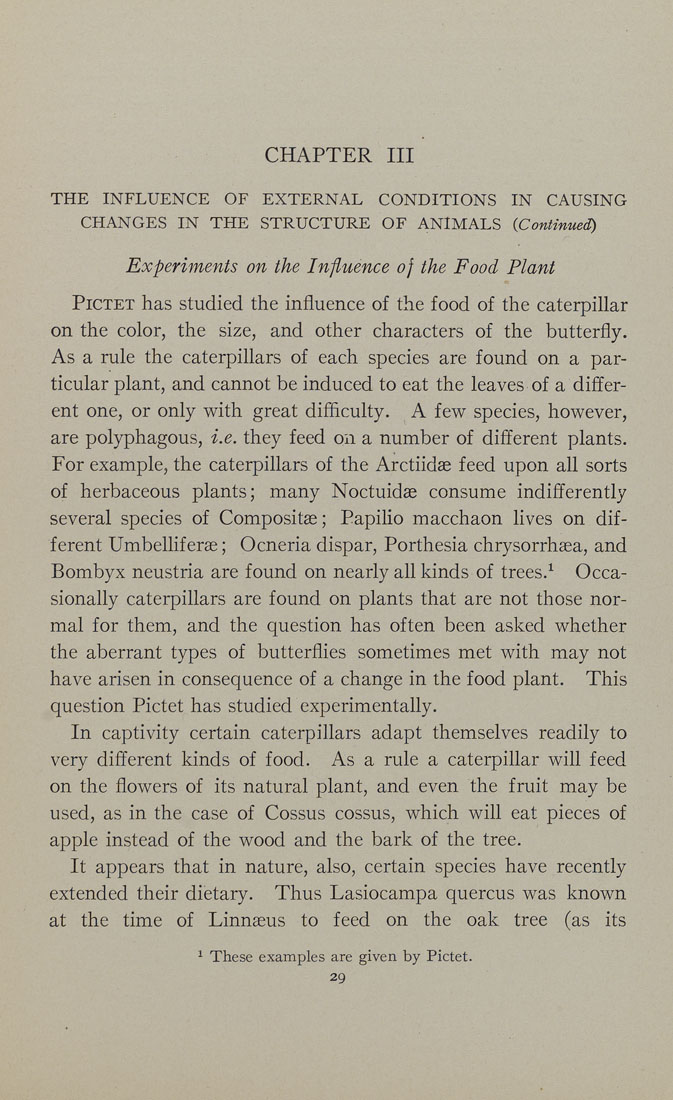CHAPTER III
THE INFLUENCE OF EXTERNAL CONDITIONS IN CAUSING
CHANGES IN THE STRUCTURE OF ANIMALS {Continued)
Experiments on the Influence of the Food Plant
PiCTET has studied the influence of the food of the caterpillar
on the color, the size, and other characters of the butterfly.
As a rule the caterpillars of each species are found on a par¬
ticular plant, and cannot be induced to eat the leaves of a differ¬
ent one, or only with great difficulty. A few species, however,
are polyphagous, i.e. they feed on a number of different plants.
For example, the caterpillars of the Arctiidae feed upon all sorts
of herbaceous plants; many Noctuidee consume indifferently
several species of Compositse; Papilio macchaon lives on dif¬
ferent Umbelliferae; Ocneria dispar, Porthesia chrysorrhaea, and
Bombyx neustria are found on nearly all kinds of trees.^ Occa¬
sionally caterpillars are found on plants that are not those nor¬
mal for them, and the question has often been asked whether
the aberrant types of butterflies sometimes met with may not
have arisen in consequence of a change in the food plant. This
question Pictet has studied experimentally.
In captivity certain caterpillars adapt themselves readily to
very different kinds of food. As a rule a caterpillar will feed
on the flowers of its natural plant, and even the fruit may be
used, as in the case of Cossus cossus, which will eat pieces of
apple instead of the wood and the bark of the tree.
It appears that in nature, also, certain species have recently
extended their dietary. Thus Lasiocampa quercus was known
at the time of Linneeus to feed on the oak tree (as its
^ These examples are given by Pictet.
29
|








